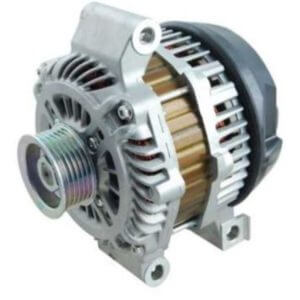Understanding the Chrysler charging system
Learn how the Chrysler charging system works
Chrysler charging systems power the alternator field in different ways depending on the generation PCM installed in your vehicle. Consult a shop manual for the exact system used in your vehicle. This is just an overview of how the Chrysler charging system works.
In a Next Generation Controller PCM the alternator has 3 wires. The black wire is a contact ground. The PCM sends a pulsed power to the alternator field coil on the dark green wire. The strength of the field depends on the pulse width. The output to the battery is on the black/grey wire.
Here’s how the Chrysler charging system works
Depending on the engine size, the PCM needs to
determine the battery’s temperature before figuring out the charge rate. On the 2.0-litre engine, it uses a battery temperature sensor located under the battery or in the battery blanket. On the 1.6-litre engine, it calculates battery temperature by looking at the intake air temperature sensor, engine coolant temp sensor, vehicle speed sensor, and radiator fan state. Rather than install a freaking battery temp sensor, Chrysler has decided to calculate battery temp based on how fast the vehicle is traveling, whether the radiator fan is blowing air across the battery, the outside air temp, etc. If any of these sensors are bad, it can set off the alternator light.
The battery temp sensor has a high failure rate because it’s situated closed to battery acid. If you own a 2.0-liter engine and have replaced the alternator and still have a charging issue, check the battery temp sensor and the connector. You’re looking for corrosion in the connector, or a failed sensor.
Also check the field ground wire. The alternator field ground wire goes through two connectors and three splices before it terminates at ground (great engineering Chrysler). Any corrosion or break in the field ground will affect alternator output.
Finally, check the output connections to the battery.
© 2012 Rick Muscoplat
Posted on by Rick Muscoplat
